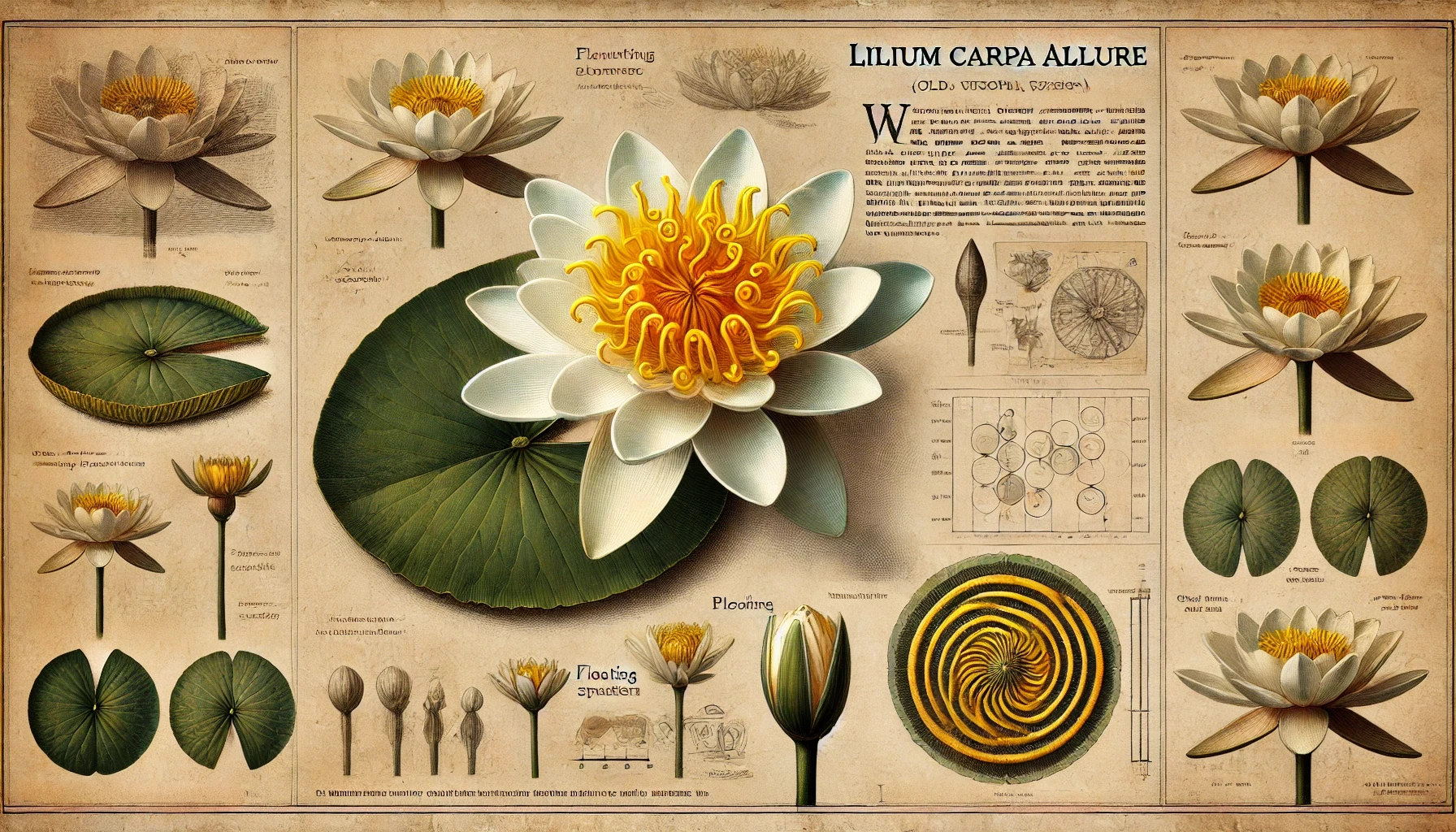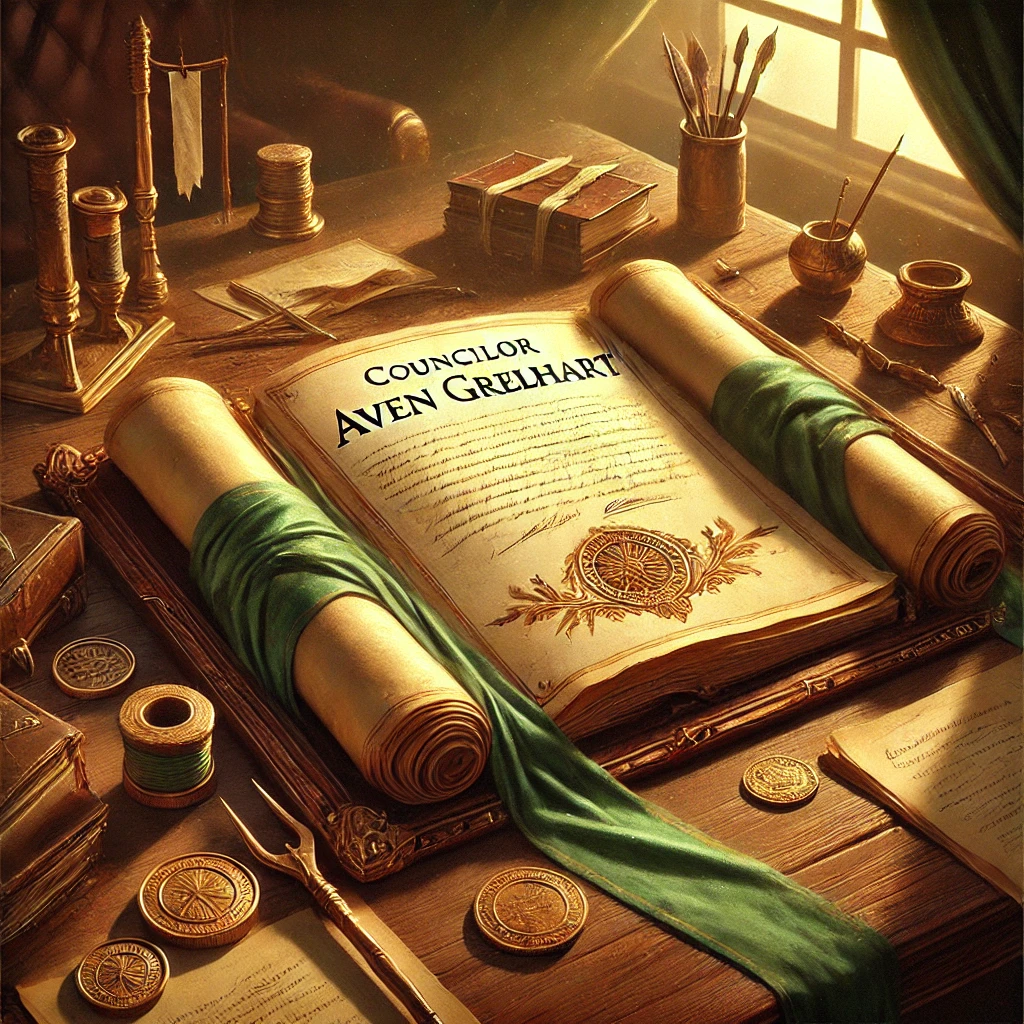Visual Description
The Lurelily Pad is a striking aquatic plant, recognizable by its wide, rounded green pads—each about a foot across—and its vibrant yellow blossoms, which rise just above the water’s surface. At the center of each bloom lies a mesmerizing swirling pattern, almost serpentine in its movement. To gaze into it is to feel a gentle tug—not physical, but mental—drawing one’s thoughts inward.
As twilight falls, the heart of the blossom begins to emit a faint phosphorescent glow, making the flower appear almost sentient, as if watching in return.
Habitat and Growth
Lurelily Pads flourish in shallow waters and still ponds across sunlit savannas, where they blanket the surface with golden reflections and motionless calm. Beneath this tranquility, however, is a remarkably calculated pollination method. The flower’s swirling core attracts aquatic insects with a hypnotic glow, only to ensnare them in viscous nectar, ensuring effective pollination before releasing them.
Though passive in appearance, the plant is an active manipulator of perception.
Alchemical Use and Preparation
The petals of the Lurelily can be distilled into a refined essence that heightens the user’s intuition and subconscious awareness. It does not produce visions, but instead sharpens perception of hidden motives, unspoken intentions, and social undercurrents. Many describe the sensation as “knowing the room before it speaks.”
The blossoms must be harvested in the early morning, just before the sun overtakes their glow. They are kept wrapped in damp cloth to preserve the subtle chemical structure that allows the petal’s essence to function.
Warnings and Curiosities
Despite their beauty, Lurelilies pose a genuine threat: individuals caught staring too long into the glowing swirl—especially at night—have been known to lose spatial awareness, wander too close to the water’s edge, or even slip silently beneath the surface and drown. The phenomenon is well-documented and has earned the bloom its folk nickname: “The Drowner’s Flower.”
While visually similar to the harmless Sunlit Lily, the Lurelily can be identified by its slight phosphorescence and the distinctive spiral pattern within the core.
Historical Notes and Folklore
In many riverside cultures, Lurelilies are believed to be the resting places of water spirits, who use the blossoms to commune with the surface world. Some believe that sleeping beside a lily-covered pond allows spirits to borrow your voice, whispering truths to others in your stead.
Ritualists sometimes float offerings of copper, song, or salt near blooming patches, asking the spirits for clarity or to “see what lies unspoken.” It is said that if a lily’s glow dims in response, your question has been heard—and your intent weighed.
Field Journal Fragment
“Four drownings this season—two witnessed, two not. All near Lurelily ponds. It is tempting, academically, to attribute each death to trance or misstep. But I’ve begun to wonder: how many of these are staged? The lilies make a tidy scapegoat—beautiful, mysterious, known to lure the mind astray. A well-placed body in such waters would invite no deeper suspicion.
I do not believe the Lurelily is malevolent. But I have seen men who are.”— Raleth Korr, Ashroot Diaries
The Trial of Still Waters
Among the Merchant and Craftsman’s Guild, elevation to the esteemed rank of Councilor of the Guild requires more than wealth or influence—it demands restraint. The final rite is the Trial of Still Waters, a test of composure and self-control.
The candidate is brought to a secluded garden pond, thick with blooming Lurelilies. There, under the gaze of hidden observers, they are tasked with sitting alone beside the water from dusk to dawn—in silence, unmoving, without charm, stimulant, or assistant.
Many fail. Some whisper softly to themselves. Others become visibly unnerved by the glowing spirals of the lilies. Those are quietly returned home with no word.
But those who pass?



Comments